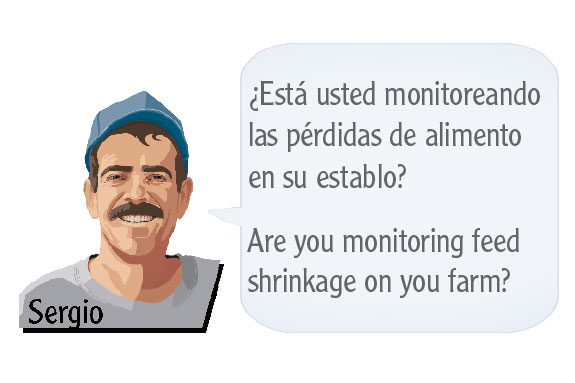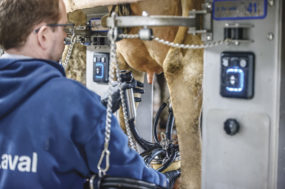On most dairies, feed costs will represent the largest single expense. With escalating prices, feed is eating up what otherwise could be pretty good milk prices. Now more than ever, controlling shrinkage is imperative. What is shrinkage? It is simply defined as the amount of feed delivered or raised on the farm that is not consumed by the cattle for which it was intended. If you don’t measure the shrinkage, you can’t manage it. And the larger the dairy, the more important this factor is.
Perhaps the single-most important advance in this area has been the adoption of on-farm scales for incoming trucks and feed-mixing equipment.
Also, significant advances have been made in the last decade in computer software to help producers track feed-mixing operations and changes in inventory.
Feed shrinkage is caused by many factors, including delivery weight errors, wind, birds, rodents, tires, tracked feed, cattle tossing feed, silage bunker losses, feed refusals, bunk heating and spoilage, moisture losses, mixing errors, scale accuracy, push-up blades, commingling of ingredients, feed wasted by feeders and drivers, silage fermentation, feedbunk management, plastic management, moving or storing feed and water damage.

What is typical? You are always going to have some shrinkage, but the goal should be to minimize it. For example, in a recent study shared by an Arizona dairy, the staff measured the following shrinkage during a 60-day period:
• Mill-run feed – more than 16 percent
• Dry distillers grain – more than 9 percent
• Commercial soybean meal product – more than 9 percent
• Alfalfa hay – more than 7 percent
• Corn silage – more than 16 percent
The nutrition consultant for this dairy helped it reach a goal of only 5 percent shrinkage. The value of all feed saved at 5 percent was nearly $175,000 per year, based on 2012 feed prices, compared with the 12 percent, or nearly $420,000, of lost feed the previous year.
That means the dairy loses $245,000 if it does not put the effort into reducing shrinkage. These losses occurred on a 1,000-cow dairy and included the cost of the feed for the milking herd, dry cows and heifers, but not the calves.
Shrinkage comes in many forms, and many factors result in feed waste. Feed shrink can represent from 5 to 15 percent of the total feed cost on the dairy – and wet, as well as the more expensive, ingredients represent the greatest concern for farm managers.
High feed costs and low milk prices increase the importance of reducing the overall feed cost. Lowering feed shrinkage is an economic opportunity for nearly all dairies of any size.
—Excerpts from NDSU Agriculture Communication’s Dairy Focus column, October 24, 2012 EL
J.W. Shroeder Extension Dairy Specialist
North Dakota State University







